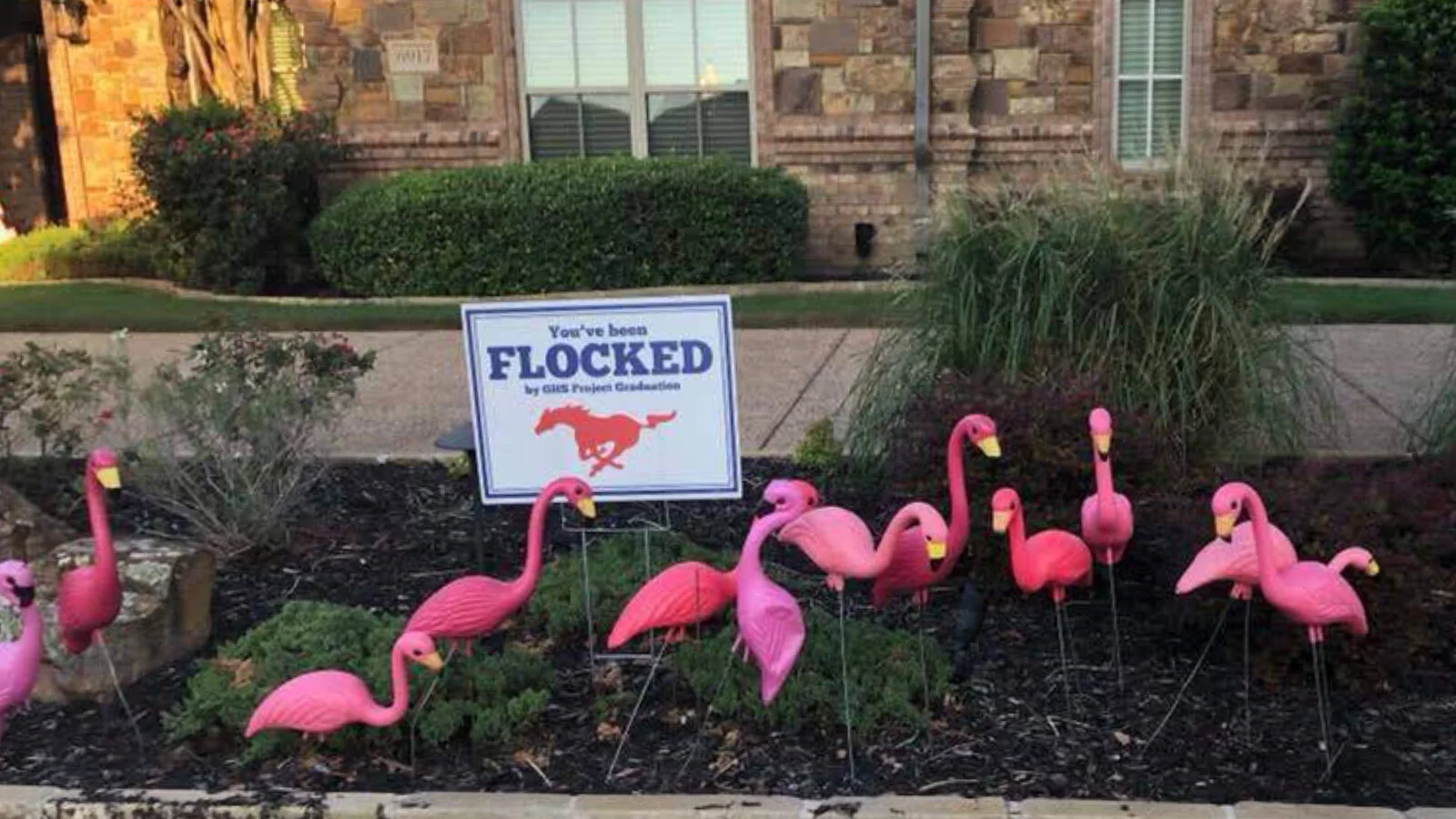The history of Pink Flamingos - secret symbol?
What is the history and story of the plastic pink flamingo? Often times you’ll see them as decorations at vintage trailer rallies and they do symbolize the 1950s to some. But where did they come from and how did they come to symbolize the 1950s? And do they have any secret hidden meanings?
Pink flamingo history
The iconic plastic pink flamingo was originally created by Don Featherstone at Union Products in Massachusetts in 1957. At the time the company had two-dimensional ducks and flamingos and Featherstone’s first product was a three-dimensional version of the duck followed by a three-dimensional pink flamingo.
With pink being a very popular color in 1957 the flamingo took off and helped offset the blandness of the growing number of tract homes of the time. For $2.75 you could place two of these in your yard and really stand out and a lot of people did just that. Other lawn icons of the era included tiki statues and lighthouses.
In the 1960s there was a backlash against them as the hippies and counter culture rejected the pink flamingo. But in the 1970s they came back because of John Waters who directed the film Pink Flamingos. While the 1972 was not about the flamingos themselves, it did feature a trailer park and with two of the birds adorning a mobile home. Pink Flamingos is actually about drag queens and some say it may be one of the most offensive pictures ever.
But it celebrated the drag queen and became campy and symbolic as well as becoming huge in the gay community. Gay bars and drag shows embraced the icon such that it appeared on earrings, on shoes and in fashion of all sorts as sort of a campy symbol.
By the mid 1980s the pink flamingo finally outsold the duck at Union Products, partially due to the popularity of the TV show Miami Vice. Pink and flamingos were big in the early 1980s and, thus, pink flamingos were once again a popular lawn ornament.
Get flocked
Eventually pink flamingos became part of the larger community and became part of prank culture where people would put them on others’ lawns as a joke. In 1979 in Madison, Wisconsin over 1,000 pink flamingos were laced on the lawn in front of the Dean’s office. Years later they paid homage to that where the town council named the pink flamingo the official bird of Madison.
That leads to what is called being flocked where an organization will fill your lawn with tons of the birds accompanied by a sign. That sign informs you that, for a donation to a specific charity, the birds will be removed. Our local Rotary club was doing this for a while and it’s pretty entertaining.
In culture
For a small plastic lawn ornament there are a lot of rumors and legends surrounding the pink flamingo.
One of those is that the people who put them on their lawn are swingers. This carries over to RV parks where you’ll see the decorations outside of campers. There is no real information I have to back this up as being anything more than an urban legend.
Today
Originally Don Featherstone included his signature in the mold of the birds to dissuade other companies from copying them. Surprisingly this continued through 2001 when it was finally removed. However buyers revolted against the unsigned birds so the feature was put back.
Surprisingly in 1996 Featherstone was awarded a Nobel Art Prize for the creation and he even moved up to become president of Union Products until his retirement in 2000.
In November, 2006 Union Products closed shop and production of the flamingo stopped. Fortunately for all of us a New York company purchased the molds and copyrights and continues to manufacture them to this day.
They still make 1,000 a day and use 270 million pounds of plastic annually.
























